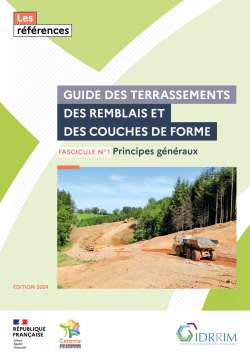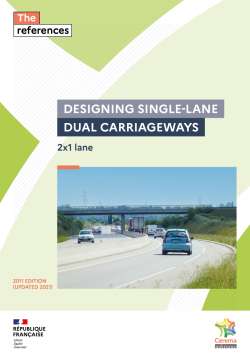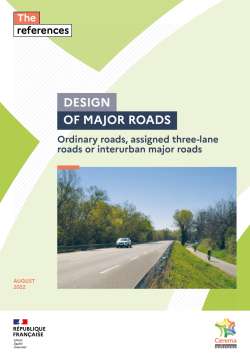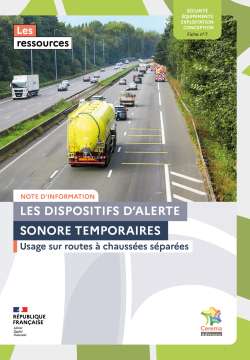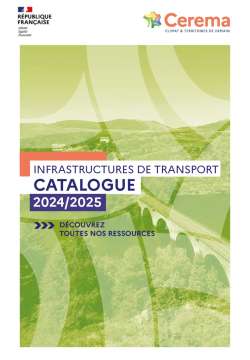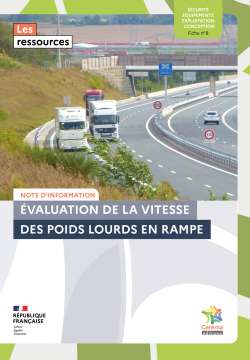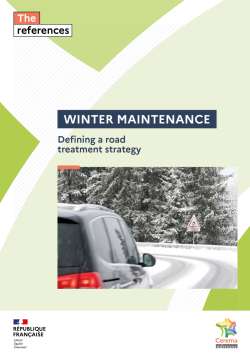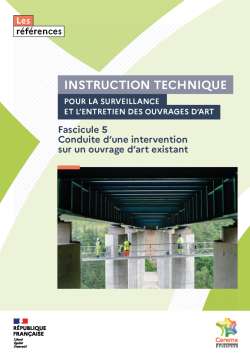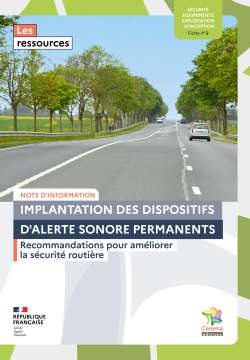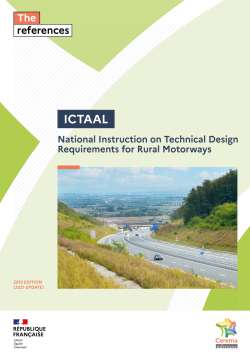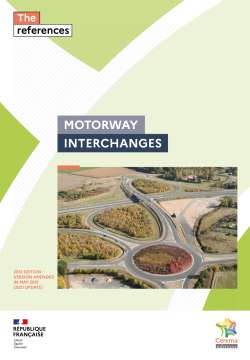
Motorway Interchanges
2013 edition - Version amended in May 2015 - 2021 Update
This guide supplements ICTAAL 2000, the National Instruction on Technical Design Requirements for Rural Motorways (Instruction sur les Conditions Techniques d’Aménagement des Autoroutes de Liaison).
It provides road designers with additional information concerning the general design and geometric characteristics of motorway interchange layouts and access to ancillary areas on interurban motorways.
It introduces a few changes with respect to ICTAAL 2000 and supersedes Factsheets nos. 22 and 32.
The new provisions in this guide are included in the consolidated version of ICTAAL published in May 2015 and cited in the French government Instruction of 13/07/2015, superseding the original version issued on 12 December 2000.
This guide is itself cited in the government Instruction of 13/07/2015, and as such, is considered to be an "instruction" applicable to the national road network. However, local and regional authorities may refer to the guide, which has been designed for use by all motorway and assimilated road network managers developing projects for which they will be the contracting authority.
Foreword*
1 - General Design
- Traffic considerations
- Motorway forks or nodes
- Grade-separated interchanges between a motorway and an ordinary road
2 - Visibility*
- Principal sight distances
- General provisions
- Visibility on approaches to access points
Visibility at an exit
Visibility at an entrance - Visibility along slip roads and branches
- Visibility under structures
3 - Geometric Characteristics of Branches and Slip Roads
- General provisions
Minimum and maximum radius values
Sequencing of horizontal alignment elements
Transition curves
Transverse deflection length
Deceleration and acceleration zones* - Vertical alignment
- Cross-section
Nodes
Interchanges between a motorway and an ordinary road
Auxiliary lanes - Crossfall
4 - Exit Systems
- 4.1 - Exit from the mainstream lane
Choice of exit system*
Layout of direction signs and markings*
Single-lane exits
Two-lane exits
Left-hand exits (on nodes only)* - Lane reduction after an exit
- Exit from a slip road or branch
- Exit system geometry*
5 - Entrance Systems
- Entrance onto the mainstream lane
Choice of entrance system
Single-lane entrances
Two-lane entrances
Left-hand entrance - Lane reduction after an entrance
- Entrance on a slip road or branch
Merging entrance to a lane (Eb 11)
Entrance adding two single-lane slip roads (Eb 11) - Entrance system geometry
6 - Geometry of Diverge and Merge Segments
- Definitions*
- Construction of the diverge segment
Nodes
Grade-separated interchange between a motorway and an ordinary road*
Exit to a collector lane
Loop exit - Merge segments
Nodes
Grade-separated interchange between a motorway and an ordinary road*
Merge from a collector lane - Crossfall of diverge/merge segments*
- Markings for diverge/merge segments
Exits
Entrance handled by merging or adding one or two lanes
7 - Closely-Spaced Access Points
- 7.1 - Consecutive exits
Siting conditions
Two exit tapers
Exit taper followed by a lane assignment exit
Lane assignment exit followed by an exit taper - Consecutive entrances*
- Entrance followed by an exit
Direct sequence
Sequence with a weaving lane
Sequence with a weaving system on a collector lane* - Connections to the Ordinary Road Network
- Developments involving Existing Infrastructure
General provisions
Branch geometry* - Bibliography*
- Glossary*
Appendix
*: updated in 2021





